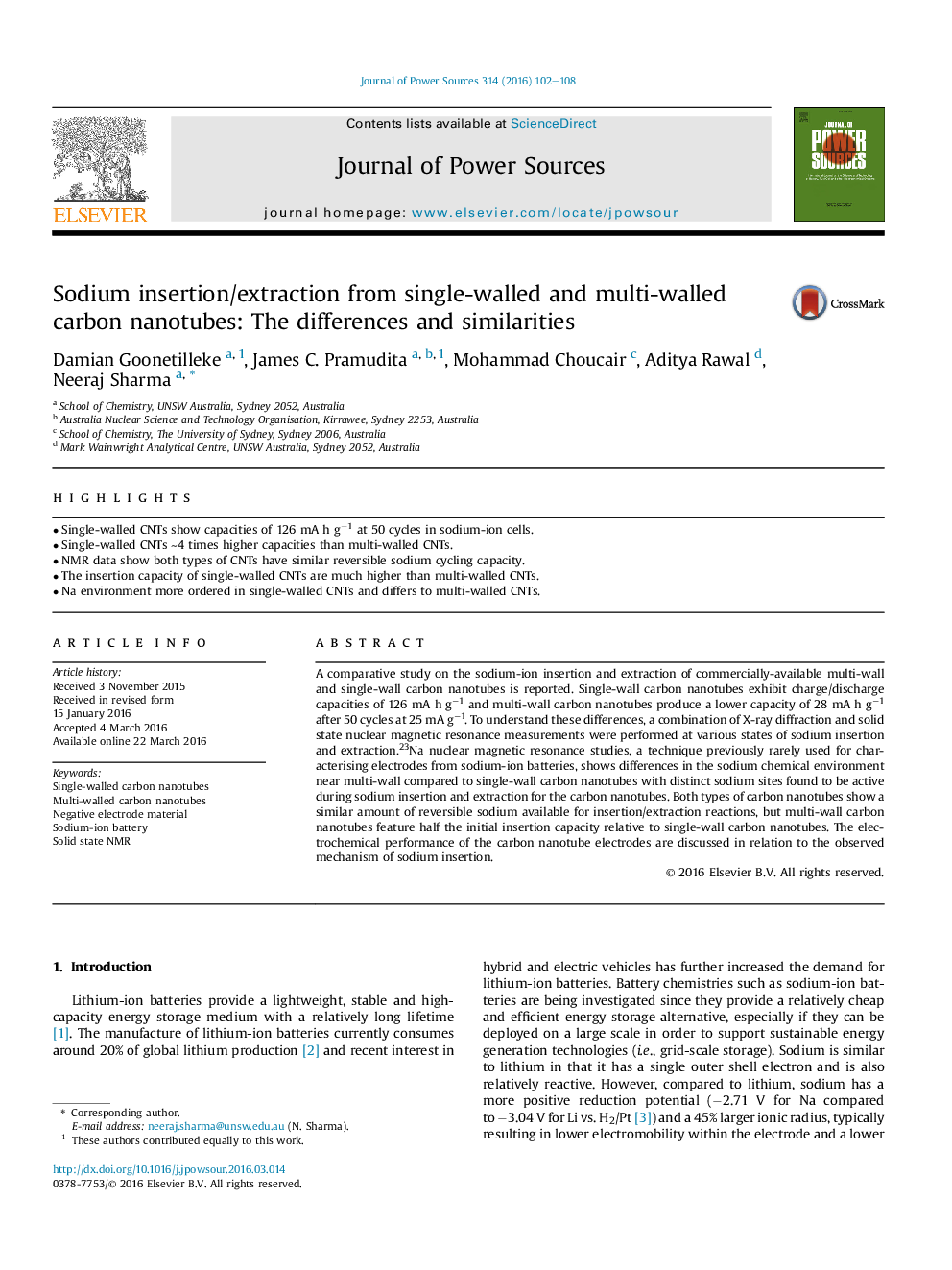| Article ID | Journal | Published Year | Pages | File Type |
|---|---|---|---|---|
| 1285368 | Journal of Power Sources | 2016 | 7 Pages |
•Single-walled CNTs show capacities of 126 mA h g−1 at 50 cycles in sodium-ion cells.•Single-walled CNTs ∼4 times higher capacities than multi-walled CNTs.•NMR data show both types of CNTs have similar reversible sodium cycling capacity.•The insertion capacity of single-walled CNTs are much higher than multi-walled CNTs.•Na environment more ordered in single-walled CNTs and differs to multi-walled CNTs.
A comparative study on the sodium-ion insertion and extraction of commercially-available multi-wall and single-wall carbon nanotubes is reported. Single-wall carbon nanotubes exhibit charge/discharge capacities of 126 mA h g−1 and multi-wall carbon nanotubes produce a lower capacity of 28 mA h g−1 after 50 cycles at 25 mA g−1. To understand these differences, a combination of X-ray diffraction and solid state nuclear magnetic resonance measurements were performed at various states of sodium insertion and extraction.23Na nuclear magnetic resonance studies, a technique previously rarely used for characterising electrodes from sodium-ion batteries, shows differences in the sodium chemical environment near multi-wall compared to single-wall carbon nanotubes with distinct sodium sites found to be active during sodium insertion and extraction for the carbon nanotubes. Both types of carbon nanotubes show a similar amount of reversible sodium available for insertion/extraction reactions, but multi-wall carbon nanotubes feature half the initial insertion capacity relative to single-wall carbon nanotubes. The electrochemical performance of the carbon nanotube electrodes are discussed in relation to the observed mechanism of sodium insertion.
